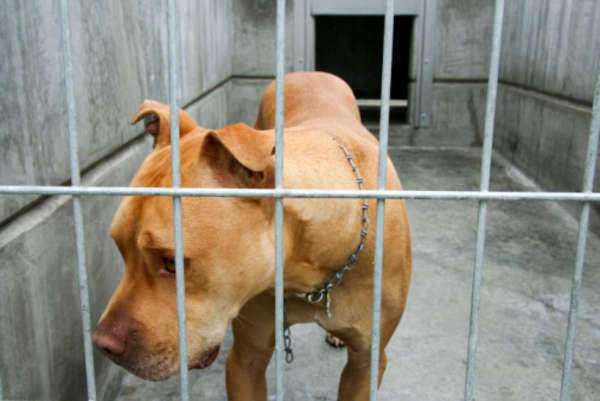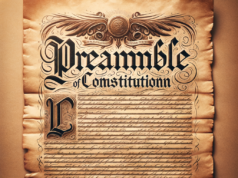Table of Contents
- 1
- 2 History of the Animal Welfare Act
- 3 Provisions of the Animal Welfare Act
- 4 Amendments to the Animal Welfare Act
- 5 Criticism of the Animal Welfare Act
- 6 Conclusion
- 7 ANIMAL WELFARE ACT TEXT
- 8 History of the Animal Welfare Act
- 9 What is the Animal Welfare Act?
- 10 What are the requirements of the Animal Welfare Act?
- 11 What animal species are protected by the Animal Welfare Act?
- 12 What are the specific animal protections afforded by the Animal Welfare Act?
- 13 Prohibition on Animal Fighting
- 14 Enforcement
The Animal Welfare Act is a federal law in the United States that governs the treatment of animals used in research, exhibition, transportation, and by dealers. The act was signed into law by President Lyndon B. Johnson in 1966 and has undergone several amendments since then. The act is designed to promote the humane treatment of animals and to ensure that their basic needs are met.
History of the Animal Welfare Act
Before the Animal Welfare Act was passed, there were few regulations governing the treatment of animals used in laboratories and other facilities. Animal welfare activists had been advocating for more humane treatment of animals for many years, but it was not until the 1960s that their efforts began to gain attention.
The Humane Society of the United States led the movement for animal welfare legislation, and in 1966, the Animal Welfare Act was passed. The act was the first federal law in the United States that regulated the treatment of animals used in research and exhibition.
Provisions of the Animal Welfare Act
The Animal Welfare Act contains several key provisions that regulate the treatment of animals. These provisions include requirements for the housing, feeding, handling, and veterinary care of animals used in research, exhibition, transportation, and by dealers.
The act requires that all facilities that use animals for research or exhibition obtain a license from the United States Department of Agriculture (USDA) and comply with specific regulations. The USDA is responsible for enforcing the Animal Welfare Act and ensuring that all facilities are in compliance with its provisions.
The act also includes provisions related to the transportation of animals. Animals must be transported in a way that ensures their safety and comfort, and they must be provided with adequate food and water during transport. Additionally, the act prohibits the use of certain types of equipment, such as snares and steel-jawed traps, to capture and transport animals.
Amendments to the Animal Welfare Act
Since its passage in 1966, the Animal Welfare Act has undergone several amendments. These amendments have expanded the scope of the act to include additional species and types of facilities.
In 1970, the act was amended to add dogs and cats to the list of animals protected by the act. This amendment also established new welfare standards for animals used in research and prohibited the sale of wild animals as pets.
In 1985, the act was amended again to regulate the use of animals in exhibition. This amendment required that all animal exhibitors obtain a license from the USDA and comply with specific regulations governing the housing, feeding, handling, and veterinary care of animals.
In 2002, the act was expanded to include specific provisions related to the care and handling of farm animals. These provisions required that farmers provide their animals with adequate food, water, and shelter and that they take steps to prevent the spread of disease.
Criticism of the Animal Welfare Act
Despite its many provisions, the Animal Welfare Act has been criticized by some animal welfare activists for not going far enough to protect animals. Some activists argue that the act does not provide adequate protection for animals used in research, particularly those used in medical and cosmetic testing.
Additionally, some critics argue that the USDA does not enforce the Animal Welfare Act vigorously enough. They point to instances of abuse and neglect in facilities that are licensed by the USDA and argue that the agency is not doing enough to ensure that all facilities are in compliance with the act.
Conclusion
The Animal Welfare Act is a federal law in the United States that governs the treatment of animals used in research, exhibition, transportation, and by dealers. The act was designed to promote the humane treatment of animals and to ensure that their basic needs are met. Since its passage in 1966, the act has undergone several amendments that have expanded its scope and provided additional protections for animals. However, the act has also been criticized by some animal welfare activists for not providing adequate protection for animals used in research and being inadequately enforced.
ANIMAL WELFARE ACT TEXT
The Animal Welfare Act of 1996, also called the Laboratory Animal Welfare Act, was an act signed into law on August 24, 1966, by former President Lyndon B. Johnson. The original intent of the Animal Welfare Act was to regulate the use and care of animals in a laboratory setting on a federal level. However, the Animal Welfare Act is the only federal act in the United States that standardizes the handling and treatment of animals in the exhibition, transport, dealing, and research. Other policies, guidelines, and laws can also include supplementary species inclusion or provisions for proper animal use and care, but all of these ultimately refer to the Animal Welfare Act as the minimal adequate standard for the treatment and care of animals.
The Animal Welfare Act has authority over animals in laboratories, animal exhibitors, dealers who sell animals to research laboratories, dog and cat breeders, animal carriers, intermediate handlers, circuses, zoos, puppy roadside menageries, mills, and transporters of animals. However, there are many different exemptions to the Animal Welfare Act, including the care and treatment of animals in state and county fairs, retail pet stores, rodeos, livestock shows, purebred cat and dog shows, and fairs or exhibitions that are intending to advance agricultural sciences and arts.
As enacted in 1966, the Animal Welfare Act requires all animal dealers to be officially licensed and registered as well as liable to any monitoring done by Federal regulators. These parties can receive a suspension of their license if they violate any of the provisions found in the Animal Welfare Act and can also be imprisonment for a maximum of one year along with a fine of $1,000. Facilities that are covered by the Animal Welfare Act are required to set up a specialized committee that has at least one individual who is trained as a veterinarian along with one who is not affiliated with the given facility. These individuals are responsible for regularly assessing animal treatment, practices, and care during ongoing research and are also required to carefully examine the animal study areas at a minimum of twice a year. These committees are also required to guarantee that substitutes for animal use in research are employed whenever possible.
While hygienic living conditions are necessary for animals who are not participating in experimentation in order to prevent unintentional infection, there are such provisions for such against intentionally infecting an animal subject with a disease for the point of the research experiment.
History of the Animal Welfare Act
The historical climate of the Animal Welfare Act looked at animal welfare as the major priority. The Animal Welfare Act of 1966 was not the first or only law that was enacted for animals during this time. There was also the Horse Protection Act which was passed in 1970 in order to protect horses against the physical practice of creating a physical appearance of the horse which was aesthetically appealing to human beings, such as soring the ankles for high-stepping gait).
Another act that had been passed was the Marine Mammal Protection act of 1970 which protected marine animals including seals, polar bears, whales, and porpoises, from extinction or depletion through indiscriminate harassment, hunting, killing, or capture. However, this rule permitted takings that were for research and subsistence purposes as long as they were done humanely and with the least amount of suffering and pain possible to the animal.
A third act that was passed for the sake of animal welfare was the Endangered Species Act of 1973, which made it illegal to sell, buy, or transport species that were considered to be extinction through either foreign or interstate commerce. Meanwhile, the act closely regulated commerce involving any species that were being threatened with extinction.
These various acts regarding animal safety and welfare showed the atmosphere and type of concern that allowed for the Animal Welfare to pass in the 1960s. The United States Congress had previously acted on many different occasions over the century to try to protect animals, both as a species and as individuals. The extent of commitment to animal protection through enforcement and regulation increased significantly during this time and revealed Congress’ rising tendency in the direction of stricter controls around the 1970s.
The foundation for the Animal Welfare Act is very clear when looking at the events that occurred shortly before the Animal Welfare Act was enacted. Because of increasing evidence showing that cats and dogs kept as pets were being stolen and taken across states lines by dealers and later and resold for scientific experimentation to research institutions, Congress readily enacted in 1966 the Laboratory Animal Welfare Act. A variety of sportsmen supported the Animal Welfare Act because often the hunter’s dogs that went missing.
The point of the act was to discourage such abuses by demanding research facilities and dealers that cared for, treated, transported, or handled certain animals to follow set standards issued and developed by the United States Department of Agriculture. The act was meant to protect dog and cat owners from having their pets taken or stolen for the sake of experimentation and to set up other humane standards for the care and treatment of specific animals by medical research facilities and animal sellers.
What is the Animal Welfare Act?
The Animal Welfare Act was signed into law by President Lyndon Johnson in 1966 and is the only federal law that regulates the treatment of animals in commercial and scientific endeavors. There are many other laws delegated by states and local authorities that provide more protection, however, the Animal Welfare Act provides the minimum coverage allowed.
The Animal Welfare Act requires that minimum standards of care and treatment be provided for certain animals bred for commercial sale and research. It also applies to animals that are transported commercially or exhibited to the public. Individuals who operate facilities in these categories must provide their animals with adequate care and treatment in the areas of housing, handling, sanitation, nutrition, water, veterinary care, and protection from extreme weather and temperatures.
What are the requirements of the Animal Welfare Act?
The Animal Welfare Act only provides minimum protection to animals used in certain practices. These include:
•Animal dealers must be a license to sell animals to research institutions, research facilities and must be registered before they can purchase animals for research.
•Research facilities must keep records regarding the purchase, sale, transportation, identification, and disposition of cats and dogs.
•Follow certain record-keeping standards affecting the purchase, sale, handling, care, and use of laboratory animals which include minimum requirements for housing, feeding, watering, sanitation, ventilation, separation of species veterinary care, and use of the use of anesthetics.
•Cage sizes and space required.
•Reports to the USDA must be made on an annual basis concluding that the animals are being treated with appropriate care, the number of animals used each year, and the level of pain and stress experienced by the animals.
•USDA veterinarians must inspect each registered research facility, at a minimum of, once a year, and have access to all animal facilities.
•Inspectors from the USDA may take photographs.
•Regulations on the disposal of animals
•Inspection of research facilities by law enforcement.
•Violations of any provisions of the Act or any of the rules, regulations, or standards by USDA under the Act are subject to civil fines for each offense, and each day such violations continue.
In addition, regulated businesses are required to keep accurate records of acquisition and disposition and a description of the animals that come into their possession. This is to prevent the practice of using lost or stolen pets in research or commercial practices. Animal dealers must hold the animals that they acquire for a period of 5 to 10 days to verify their origin and allow pet owners an opportunity to locate a missing pet.
What animal species are protected by the Animal Welfare Act?
The AWA defines “animal” as any live or dead dog, cat, nonhuman primate, guinea pig, hamster, rabbit, or any warm-blooded animal used for research, teaching, testing, experimentation, or exhibition purposes, or as a pet. The Animal Welfare Act also includes animals exhibited in zoos, circuses, and marine mammal facilities, as well as pets transported on commercial airlines. The act also prohibits staged dogfights, bear and raccoon baiting, and other similar endeavors.
By definition, coldblooded species are exempt from coverage under the Animal Welfare Act. The Animal Welfare Act also excludes birds, rats, mice, insects, and fish bred for use in research; and horses not used for research purposes
Farm animals are also excluded, including livestock and poultry, used or intended for use as food or fiber or in agricultural research are also excluded from protection under the Animal Welfare Act.
What are the specific animal protections afforded by the Animal Welfare Act?
The Animal Welfare Act does not specifically mention any detailed protections for the animals. The Act gives authority to the Animal and Plant Health Inspection Service; an agency under the United States Department of Agriculture.
APHIS provides detailed instructions on a number of issues involving the maintenance of animals in use for research, teaching, testing, experimentation, or exhibition purposes, or as pets. These are outlined on the APHIS’s website at
https://www.aphis.usda.gov/animal_welfare/awa_info.shtml.
The APHIS provisions include regulations on housing, exercise, accumulation, and disposal of waste products, heating, cooling, lighting, feeding, and watering. There are also regulations in place that determine the minimum amount of space that is permitted for each species of animal. Some of these provisions include:
•For indoor housing of animals, regulations specify minimum and maximum temperatures, lighting, and ventilation;
•Animals kept outdoors must be sheltered from the elements;
•Animals must be offered food and clean water regularly;
•For facilities with marine mammals, the water must be tested weekly, animals must be kept with a compatible animal of the same or similar species, minimum tank size is required depending on the size and types of animals housed, and participants in “swim with the dolphins” programs must agree in writing to the rules of the program;
•Circuses must not use deprivation of food and water or any kind of physical abuse for training purposes, and animals must be given a rest period between performances; and
•Research facilities are required to establish Institutional Animal Care and Use Committees (IACUC) that must inspect the animal facilities, investigate reports of AWA violations, and review research proposals to “minimize discomfort, distress, and pain to the animals.
Prohibition on Animal Fighting
On May 3, 2007, the Animal Welfare Act was amended to make it a violation of the Act to engage in animal fighting and acts that would promote animal fighting. The Animal Welfare Act amendment makes it a felony punishable by up to three years in prison to engage in such activities. The law also makes it a felony to trade, in interstate and foreign commerce, knives, gaffs, or other sharp objects designed for use in animal fighting, or to use the Postal Service or other “interstate instrumentality to trade in such devices, or to promote an animal fighting venture.”
Enforcement
One of the problems associated with APHIS and the Animal Welfare Act is the limitation of enforceability of the provisions of the act. Under current legislation, upon the finding of a violation APHIS may suspend the license of an individual or organization for up to 21 days. From that point, the individual or organization must correct their procedures. Failure to comply with demands made by APHIS can lead to fines, confiscation of the animals, license/registration revocation, and/or cease and desist orders.
Due to complaints concerning APHIS’s lace of enforcement of the Animal Welfare Act amendments to APHIS’s procedures have been put into place to better streamline inspections and ensure enforcement of regulations. There have also been complaints about APHIS’s lack of authority to fully enforce the regulations of the Animal Welfare Act. Those complaints are currently being addressed in the proposed new legislation.
























